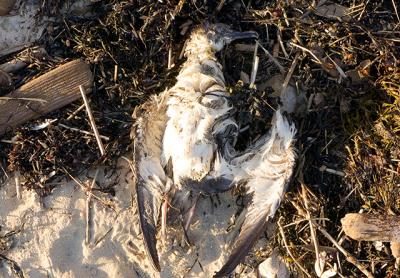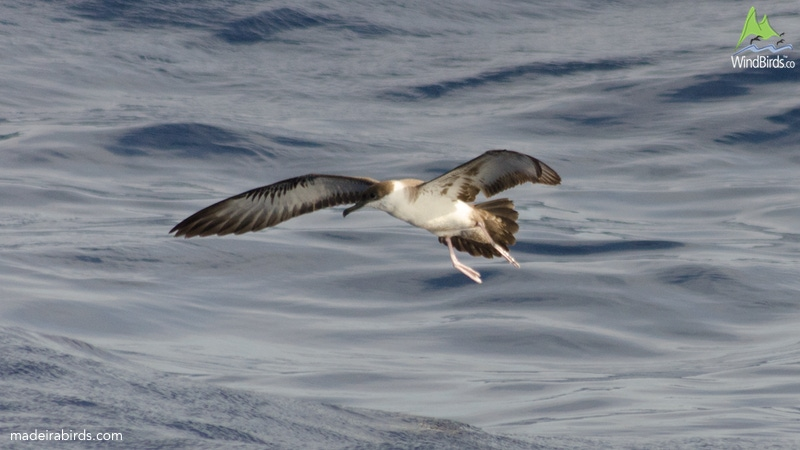Pauline Rosen, a volunteer at the Evelyn Alexander Wildlife Rescue Center in Hampton Bays, reported seeing 48 washed-up shearwaters while walking along Montauk and Napeague beaches. The Wildlife Rescue Center had found 28 dead birds, making 76 in all.
"We alerted the D.E.C. that we were getting calls about the mass numbers of dead birds, but we don't know the cause," Amanda Daley, an assistant at the center said. "They were not coming in with any injuries, they were coming in ill."

Although a definitive explanation of why so many shearwaters have been washing up on Long Island is unclear, mass die-offs have occurred in the past. According to a 2013 study, in 12 separate mortality events from 1993 to 2011, 4,961 dead great shearwaters were documented along the East Coast. Researchers found 58 percent emaciated and that the gastrointestinal tracts of 82 percent contained at least one plastic bead.
Great shearwaters come ashore in other parts of the world to excavate burrows in grasses or woodlands where a single egg is laid about three feet underground, they do not come ashore here under normal circumstances. Since they are rarely seen on land except when breeding, their simultaneous deaths on Long Island are perplexing.
Great shearwaters breed only on four islands in the South Atlantic, but they are common in other parts of the Atlantic and are known to follow a circular migration route. They begin along the eastern coast of South America, then head north along the East Coast of this country. After wintering along coastlines of the Arctic Circle, they return south and travel to the coast of Africa.
According to Joe Okoniewski, a wildlife pathologist at the State Department of Environmental Conservation in Albany, malnutrition seems to be the culprit of those found dead on Long Island. The D.E.C. received 20 birds from the western part of the Nassau County shoreline. "They have no fat, have reduced musculature, and are in a poor nutritional state," Mr. Okoniewski said. "They are immature birds that were probably migrating from the Southern Hemisphere, and somewhere along the way they had food shortages."
Most of the birds brought in were less than a year old, but Mr. Okoniewski nevertheless found plastic in some of their stomachs, which is in line with the 2013 study. "I've looked at seven, two of which had plastic in their stomachs, one with a significant amount," he said. He does not believe plastic was the significant cause of their deaths.
A phenomenon that researchers have been debating is the effect of weather. Because great shearwaters are a pelagic species that spends most of its time on the ocean, some dismiss theories that heavy winds could disrupt them. While they are accustomed to foul weather, Mr. Okoniewski noted there were unusally heavy southeast winds last week that could have disrupted already weak and young birds.




Reader Comments
to our Newsletter